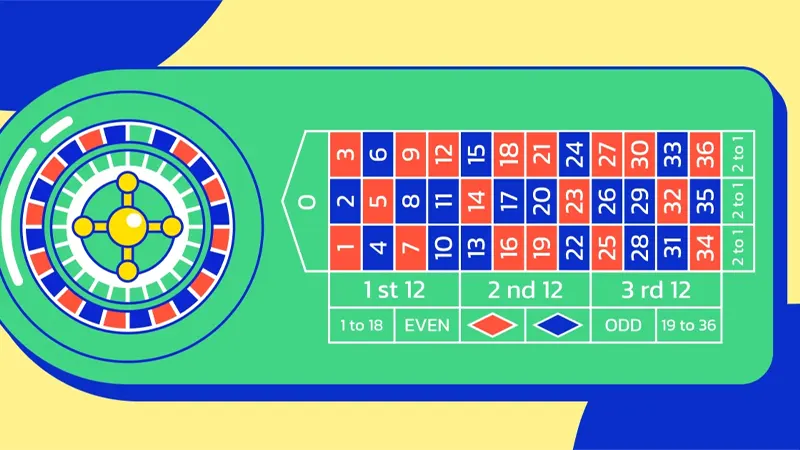Roulette remains one of the most legendary and captivating games found in casinos around the globe. Its mix of pure luck and tactical betting appeals to newcomers and experienced players alike. Watching the wheel spin and the ball bounce around creates a suspenseful rush that keeps everyone guessing where it might stop. Although chance decides each outcome, many gamblers look to boost their chances by following time-tested betting systems.
In this article, we explore five of the most well-known roulette strategies: Martingale, Fibonacci, Labouchère, Paroli, and Beyond. Each offers a unique way to control your bets and manage your bankroll, fitting different risk appetites and playing styles.
How Roulette Really Works
Before diving into popular roulette strategies, it’s crucial to understand the basics of the game itself. At its heart, roulette is all about chance: players place bets on a layout showing numbers and various betting options. Once bets are set, the dealer spins the wheel one way and rolls a small ball the other way. When the ball settles into a numbered slot, winners are paid based on where it lands.
Roulette gives players plenty of ways to bet. You can go for a single number, bet on groups of numbers, or pick broader outcomes like red or black, odd or even, or high numbers (19–36) versus low numbers (1–18). Each type of bet has different odds and payouts, letting you choose between safer bets or bigger risks for higher rewards.
Another key thing to know is the house edge—the built-in advantage the casino holds. European roulette, with its single zero (0), carries a house edge of roughly 2.7%. American roulette adds a double zero (00), bumping the edge up to around 5.26%. Knowing these numbers helps you see why certain strategies might work better and why luck always plays a part.
to the world of 82 Lottery and see how learning these classic strategies can sharpen your roulette skills and make your gaming sessions even more exciting!
5 Famous Roulette Strategies
Roulette isn’t just about luck—how you bet can shape your overall experience and help you manage risk. Over the years, players have developed several betting systems to handle wins, losses, and bankroll swings. Below, we’ll break down five of the most talked-about strategies: from the straightforward Martingale to more complex methods like Fibonacci and Labouchère.
Each approach has its pros, cons, and fits different playing styles. Let’s look at how they work so you can decide which one best suits your game.
1.Martingale – The Doubling Strategy
The Martingale system is probably the most famous roulette betting method, especially among newcomers because it’s easy to follow. The main idea: every time you lose, you double your next bet. When you finally win, you recover all past losses plus make a profit equal to your first bet.
For example, say you start with a $10 bet on red/black or odd/even. If you lose, your next bet is $20. Lose again, and you bet $40. If you then win on the third spin, you get $80 back. After subtracting your total bets ($10 + $20 + $40 = $70), you’re left with a $10 profit—the same as your original stake.
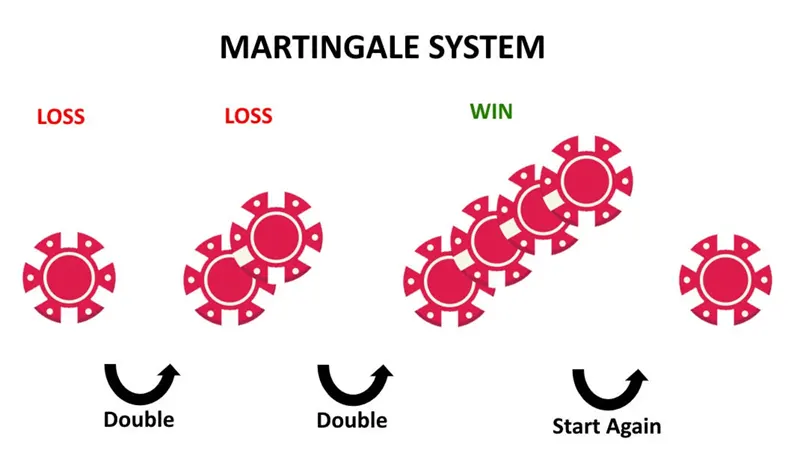
Why players like it:
-
It’s simple to use, especially for even-money bets, which have close to a 50% chance of winning.
-
The idea of a single win wiping out a series of losses feels reassuring, at least in the short term.
What to watch out for:
-
You need a big bankroll to survive losing streaks, which do happen more often than most expect.
-
Casinos set maximum table limits, so after a few losses, you might not be able to keep doubling your bet.
-
If the losing streak is long enough, you can run out of money or hit the betting cap, leading to heavy losses.
Important reminder: Martingale doesn’t actually change the odds of the game. Each roulette spin is independent, so your chance of winning stays the same no matter how many times you’ve lost. Think of it more as a bankroll management tactic than a guaranteed path to profit, and always play within your means.
Example recap:
-
Start: $10
-
Lose → bet $20
-
Lose → bet $40
-
Win → get $80, total bets were $70 → profit: $10
Use it carefully, and remember: it’s about managing streaks, not beating the odds themselves.
2. The Fibonacci Strategy – A Mathematical Betting Approach
The Fibonacci strategy is based on the well-known numerical sequence: 0, 1, 1, 2, 3, 5, 8, 13, and so on. This sequence determines bet sizes after losses, with each subsequent wager being the sum of the two preceding ones. For instance, after a $1 loss, the following bets would be $1, $2, $3, $5, etc. Upon winning, the player moves back two steps in the sequence, reducing the stake and gradually recouping losses.
A major benefit of the Fibonacci system is its controlled risk—bets rise more gradually compared to aggressive methods like the Martingale, making it suitable for players with smaller bankrolls. However, extended losing streaks can still result in high bets, and like all betting strategies, it does not alter the game’s odds or remove the casino’s advantage. This method is best for disciplined players who prefer a structured, low-risk approach over volatile betting styles.
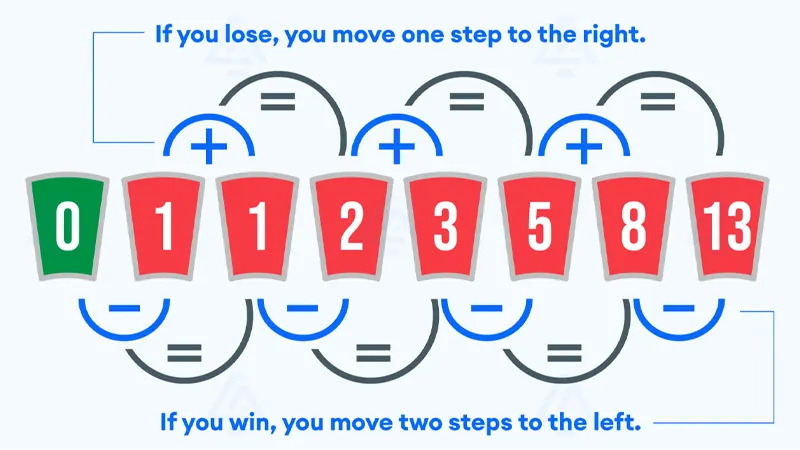
Example:
-
First bet: $10 (Loss)
-
Next bet: $10 (Loss)
-
Following bet: $20 (Win) → Profit: $10
Note: This system helps players preserve their bankroll longer than high-risk strategies.
3. Labouchère – The Cancellation Method
Also known as the “Split Martingale” or “Cancellation,” the Labouchère system starts by deciding how much profit you want to make, then breaking that target into a list of smaller numbers. Your bet is always the sum of the first and last numbers in the list. If you win, you cross those two numbers off. If you lose, you add the amount you just bet to the end of the sequence. You keep going until the list is gone—meaning you’ve reached your profit goal.
What makes Labouchère stand out is its structured, customizable approach. It appeals to players who like to plan their bets and track progress toward a set target. With tools offered by sites like 82 Lottery, keeping tabs on your sequence becomes much easier.
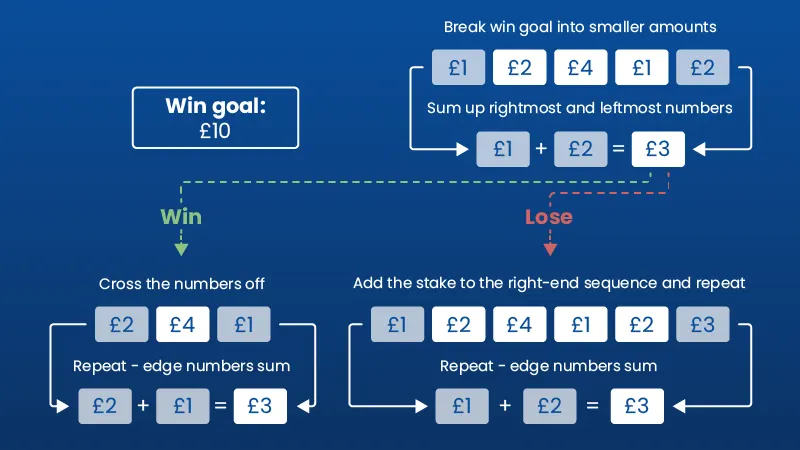
Still, this method isn’t as straightforward as Martingale or Paroli. It demands careful attention to your list, and losing streaks can stretch the sequence, leading to higher bets that put pressure on your bankroll. While it doesn’t double bets aggressively, the steady buildup can still create risk if you’re not disciplined. This strategy fits players who enjoy calculated systems and can stay calm under pressure.
Example:
-
Goal: $100 profit
-
Sequence: 10, 20, 30, 40
-
First bet: 10 + 40 = $50
Tip: Patience, focus, and strict tracking are key to making this system work effectively.
4. Paroli – Riding the Winning Streaks
Paroli is one of the simplest and most beginner-friendly roulette strategies out there. Instead of trying to chase back losses, Paroli uses a “positive progression” where you double your bet only after you win. The goal: make the most of hot streaks without putting your whole bankroll at risk.
Here’s how it works: start with your base bet. Each time you win, double your bet. After hitting three wins in a row—or whatever streak length you choose—you go back to your starting amount. If you lose at any point, you immediately drop back to the base bet. For instance, if you start at $5, win twice, your next bet is $20. If you lose on the third bet, you’re still up a bit and simply reset to $5.
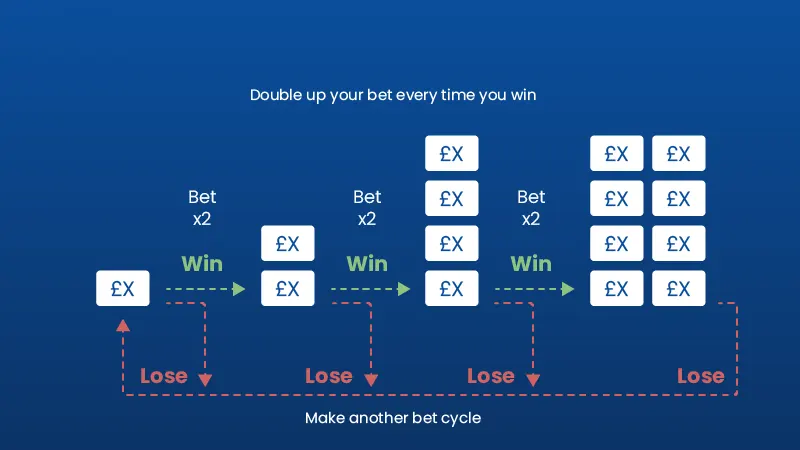
Why it appeals:
-
Low risk, since you only increase bets when you’re ahead.
-
Simple to track, making it perfect for casual players.
Downside:
-
You need a good winning streak to see real profit.
-
Scattered wins may keep earnings modest.
For anyone who wants a safer, steady-paced strategy—especially on reliable sites like 82 Lottery—Paroli offers an easy balance of fun and control.
Example:
-
Start: $10
-
Win → bet $20
-
Win → bet $40
-
Lose → back to $10; net gain: $10
Tip: Decide in advance when to stop so you keep your winnings.
5. Beyond – Strategies for Advanced Players
For those ready to go deeper, there are advanced strategies like the James Bond system, D’Alembert, or even using data tools and wheel bias analysis. These methods blend math, structured betting progressions, and sometimes even software to improve how and where you place bets.

Used properly, they can increase your potential profits and bring a more tactical feel to the game. But they aren’t beginner-friendly. They demand a solid grasp of roulette rules, disciplined play, and plenty of practice to avoid mistakes.
Example:
-
James Bond strategy: bet $140 on numbers 19–36, $50 on 13–18, and $10 on zero.
Tip: Always practice on free tables first to get comfortable before risking real money.
These strategies can add depth for experienced players, but they work best when paired with patience, discipline, and a realistic understanding of roulette’s odds.
Comparing the Strategies
| Strategy | Progression Type | Risk Level | Bankroll Needed | Suitable For | Key Advantage | Key Disadvantage |
|---|---|---|---|---|---|---|
| Martingale | Negative (Double after loss) | High | Large | Aggressive players with deep pockets | Quick recovery of losses | Rapidly escalating bets; high risk of ruin |
| Fibonacci | Negative (Follows Fibonacci sequence) | Medium | Moderate | Budget-conscious, patient players | Slower bet progression than Martingale | Prolonged losses still lead to large bets |
| Labouchère | Mixed (Custom sequence, cancel on win) | Medium | Moderate to Large | Strategic, analytical players | Flexible; customizable sequence | Complex tracking; requires discipline |
| Paroli | Positive (Double after win) | Low | Small to Moderate | Conservative, risk-averse players | Limits losses; capitalizes on streaks | Small wins; relies on winning streaks |
| Beyond | Complex (Variable progression) | High | Very Large | Experienced, high-stakes players | Adaptable to different scenarios | High complexity; potential for big losses |
Final Thoughts on Mastering Roulette Strategies
Roulette is thrilling because it blends pure chance with how you choose to bet. From the bold Martingale to the disciplined Fibonacci, the customizable Labouchère, the low-risk Paroli, and more advanced systems, each strategy offers its own balance of risk, reward, and complexity.
No betting method can change the built-in house edge, but picking the right strategy can help you manage your bankroll, keep play exciting, and fit your own risk comfort. Whether you’re just starting out or looking to level up your game at 82 Lottery, remember: stay disciplined, know your limits, and enjoy the ride — because in the end, roulette should always be about fun first.


